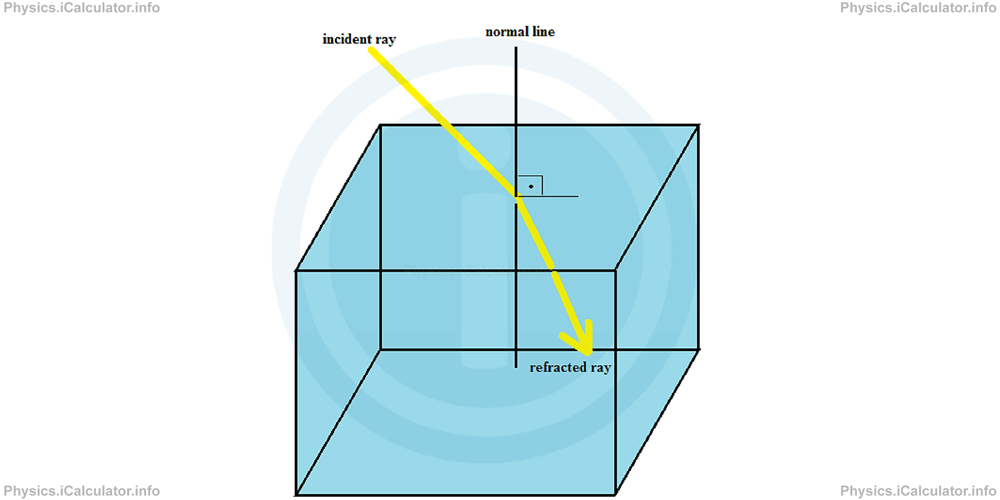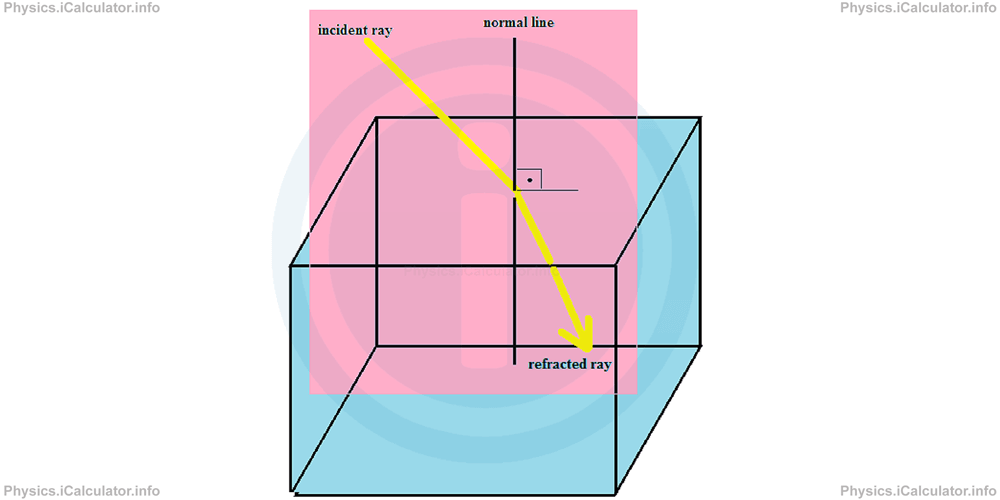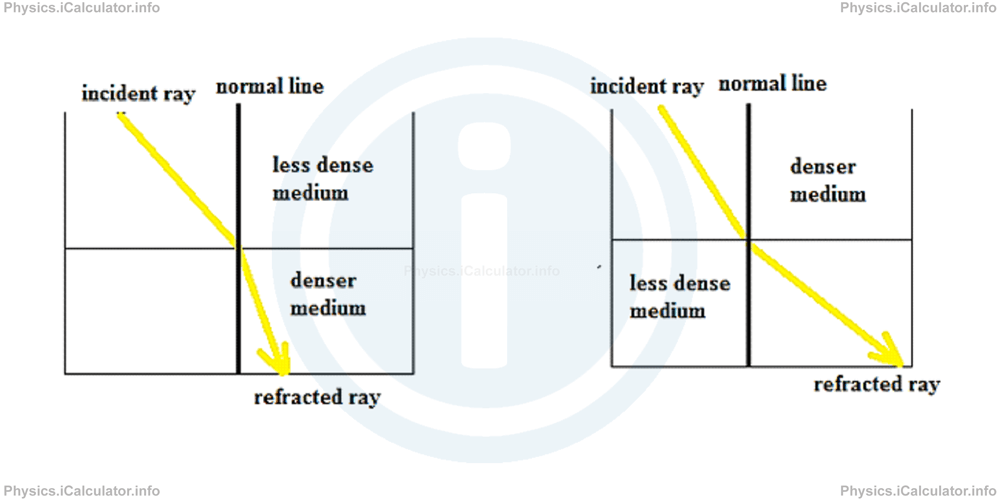Menu
Physics Lesson 12.3.3 - Laws of Refraction
Please provide a rating, it takes seconds and helps us to keep this resource free for all to use
Welcome to our Physics lesson on Laws of Refraction, this is the third lesson of our suite of physics lessons covering the topic of Refraction of Light, you can find links to the other lessons within this tutorial and access additional physics learning resources below this lesson.
Laws of Refraction
Like in reflection, we must first introduce the concept of normal line to avoid issues caused by any possible non-regular interface between the two media in which light travels. Thus, normal line in refraction is the line that is perpendicular to the interface of the two media and which passes through the same point in which light touches the second medium as shown below.

Based on this description, the two Laws of Refraction are:
1. Incident ray, refracted ray and the normal line are all at the same plane
This law is very similar to the first law of reflection. Look at the figure.

2. When the light passes from a less dense medium to a denser one, it approaches the normal line, while when light passes from a denser medium to a less dense one, it moves away from the normal line
For example, when light passes from air into water, it bends towards the normal line as shown in the above figure. On the other hand, when light passes from glass to air for example, light bends away from the normal line.

We can use the concepts of the angle of incidence and angle of refraction to express the 2nd Law of Refraction. This, if we denote the angle of incidence by î, the angle of refraction by ȓ, the density of the first medium by p1 and that of the second medium by p2, we can write:
If p1 > p2, then î < ȓ
The explanation for this phenomenon is as follows:
Since the frequency of light waves does not change during refraction, the time of motion does not change as well, because time is a multiple of period (t = N × T) and period is the inverse of frequency (T = 1/f). Therefore, we can write for frequency of light waves
= N/t
Since the speed of light decreases when it enters in a denser medium, the wavelength decreases as well because
Hence, the light ray shortens its path when it enters a denser medium (for example from air to water). Therefore, it approaches the normal line (the angle of refraction decreases).
The opposite occurs when light passes from a denser medium to a less dense one. In this case, the wavelength increases and therefore the path becomes longer. As a result, the light ray moves away from the normal line, i.e. the angle of refraction increases.
Only in one case the light rays do not bend when they change medium. This occurs when light is incident at 00 to the normal line (or at 900 to the interface of two media). This is because the angle of refraction cannot be smaller than 0. The only thing we can observe in such cases is that objects look in a different distance from the surface than they actually are because light shortens the path when it enters into a denser medium and it elongates the path when moving into a less dense medium. That's why rocks at bottom of the river look closer than they actually are.
You have reached the end of Physics lesson 12.3.3 Laws of Refraction. There are 7 lessons in this physics tutorial covering Refraction of Light, you can access all the lessons from this tutorial below.
More Refraction of Light Lessons and Learning Resources
Whats next?
Enjoy the "Laws of Refraction" physics lesson? People who liked the "Refraction of Light lesson found the following resources useful:
- Law Feedback. Helps other - Leave a rating for this law (see below)
- Optics Physics tutorial: Refraction of Light. Read the Refraction of Light physics tutorial and build your physics knowledge of Optics
- Optics Revision Notes: Refraction of Light. Print the notes so you can revise the key points covered in the physics tutorial for Refraction of Light
- Optics Practice Questions: Refraction of Light. Test and improve your knowledge of Refraction of Light with example questins and answers
- Check your calculations for Optics questions with our excellent Optics calculators which contain full equations and calculations clearly displayed line by line. See the Optics Calculators by iCalculator™ below.
- Continuing learning optics - read our next physics tutorial: Interference and Diffraction of Light
Help others Learning Physics just like you
Please provide a rating, it takes seconds and helps us to keep this resource free for all to use
We hope you found this Physics lesson "Refraction of Light" useful. If you did it would be great if you could spare the time to rate this physics lesson (simply click on the number of stars that match your assessment of this physics learning aide) and/or share on social media, this helps us identify popular tutorials and calculators and expand our free learning resources to support our users around the world have free access to expand their knowledge of physics and other disciplines.